
Click to find out

crunchy skin
jointed legs
Latin name
wiley coyote
 | The word Arthropod means what? Click to find out | |
 |
rubber fingers crunchy skin jointed legs Latin name wiley coyote | |
| Get rid of the monkey please. | ||
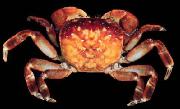 Crustaceans are mostly marine arthropods. Most familiar in this class are crabs, lobsters and shrimp. Crustaceans are important to humans commercially, but they're also important in other ways.
Crustaceans are mostly marine arthropods. Most familiar in this class are crabs, lobsters and shrimp. Crustaceans are important to humans commercially, but they're also important in other ways.  Crustaceans include the typical invertebrates on a sea-food platter, such as lobster, crab and shrimp. There are also brine shrimp, natives of the Great Salt Lake. Crayfish are crustaceans too, and they're a lot like little lobsters. Forgive me if I sometimes pronounce them as "crawfish," as I spent a little time in the South. All these are decapods, or ten-legged crustaceans.
Crustaceans include the typical invertebrates on a sea-food platter, such as lobster, crab and shrimp. There are also brine shrimp, natives of the Great Salt Lake. Crayfish are crustaceans too, and they're a lot like little lobsters. Forgive me if I sometimes pronounce them as "crawfish," as I spent a little time in the South. All these are decapods, or ten-legged crustaceans. Centipedes and millipedes may seem a lot alike, but they're easy to tell apart if you know what you're looking for.
Centipedes and millipedes may seem a lot alike, but they're easy to tell apart if you know what you're looking for. 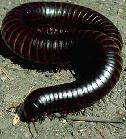 Millipedes, on the other hand, are known as diplopods. They have two or more pairs of legs per segment. Those in the U.S. are not poisonous. The legs of a millipede are under the body, and the body is usually round. Diplopods are usually herbivores.
Millipedes, on the other hand, are known as diplopods. They have two or more pairs of legs per segment. Those in the U.S. are not poisonous. The legs of a millipede are under the body, and the body is usually round. Diplopods are usually herbivores. The most common of arachnids are the spiders. They are characterized by their eight legs, two-part bodies and their fangs. Most, but not all spiders spin webs.
The most common of arachnids are the spiders. They are characterized by their eight legs, two-part bodies and their fangs. Most, but not all spiders spin webs. Believe it or not, scorpions are closely related to spiders. They have very similar mouths and legs. One noticeable difference is the tail of the scorpion. Actually, it isn't a tail, but an elongated body. At the tip is a venom gland. This is also known as the stinger.
Believe it or not, scorpions are closely related to spiders. They have very similar mouths and legs. One noticeable difference is the tail of the scorpion. Actually, it isn't a tail, but an elongated body. At the tip is a venom gland. This is also known as the stinger.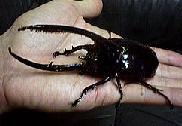 You know these creatures. There are over 100 million species, so chances are you've run into one or two insects before.
You know these creatures. There are over 100 million species, so chances are you've run into one or two insects before. Insects re extremely diverse and advanced (for spineless animals.) The insect class is divided into many orders of insects. Not all will be listed here, but many are familiar to you.
Insects re extremely diverse and advanced (for spineless animals.) The insect class is divided into many orders of insects. Not all will be listed here, but many are familiar to you.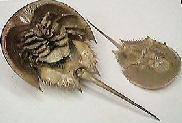 You could say that horseshoe crabs are in a class by themselves. These poor mis-named critters are neither crabs nor horseshoes, but belong to a class called Meristomata. They are more closely related to spiders and scorpions than they are to the crabs.
You could say that horseshoe crabs are in a class by themselves. These poor mis-named critters are neither crabs nor horseshoes, but belong to a class called Meristomata. They are more closely related to spiders and scorpions than they are to the crabs.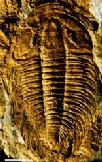 The other arthropod I want to mention is unusual. It's not rare or weird, but it has been extinct for millions of years. This animal is the trilobite.
The other arthropod I want to mention is unusual. It's not rare or weird, but it has been extinct for millions of years. This animal is the trilobite.